If you take a close look at a 16 gauge shell, you’ll see a shotgun shell that looks just perfect for hunting; it’s slender but you wouldn’t call it small. Quite the contrary, the “business-like” size gives you peace of mind; it’s a shell that’ll give you all the performance you’ll ever need, even for larger game.
It’s well-conceived dimensional (length/diameter) ratio, lets you use loads that range from 25 to 40 grams in standard cases, although the ideal load range is 27 - 34 grams.
Very popular and widely used in the not-too-distant past, from early to the middle of the last century, it can be used on equal terms with the ubiquitous 12 gauge. In fact in the decades in which it was popular, it was both constantly and frequently used in many different types of guns.
In the early 900s, the Browning Auto 5 automatic was the gun that made the 16 gauge popular with both European and American hunters. For 50 years, 16 gauge guns were made and sold in an abundance of break-action, side-by-side and over/under configurations of a variety of pedigrees, from the common man’s rough-and-ready artisanal harquebusier to the finest shotguns made by English gunsmiths.
It was used less and less after the Second World War, although it was still quite popular in Southern Italy for a time, but from the 60s its regression showed signs of an almost circadian trend, with the 16 gauge becoming something of a rarity.
Today, the slow but continuous decline in hunting, caused by questionable pseudo-protectionist policies and a violent war conducted by environmentalists who have no knowledge of either the environment or the animals that inhabit it, is almost killing this most atavistic of human pastimes.
But it still remains a fine way to rediscover those flavours of old and relive the best of hunting’s glorious past, with traditions and characteristics that have been all but lost over the decades, and today this strange “modus cogitandi” has breathed new life into the 16 gauge, the most poetic and courteous of calibres.
The revival, and new lease of life, of the 16 gauge
Many keen hunters have in recent years doggedly promoted the revival of the 16 gauge and some major gunsmiths have started to give them just what they want, fuelling the comeback by putting guns of this bore size into production.
Some examples are the over/unders from Rizzini and FAIR, the sophisticated guns made by the Fausti sisters, and last but not least the Browning A5 inertia-operated semi-automatic, designed specifically for this fine shell. All these guns represent the epitome of this trend.
One obvious advantage the 16 gauge has over a 12 gauge is that it weighs less, and guns chambered for this bore size are extremely well-balanced, the best choice for walked-up and migratory hunting, or when hunting with a gun dog.
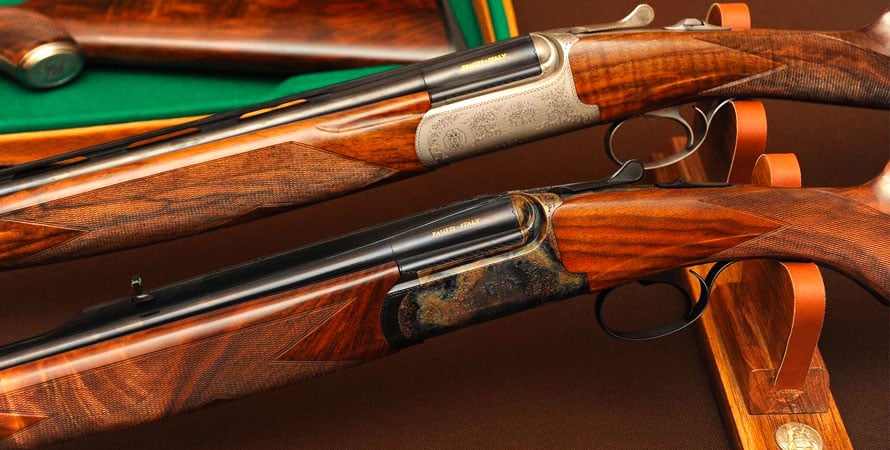
The fact is, you won’t hear hunters who’ve used these shells complain it penalised their results, something that might be the case when hunting anatidae or wood pigeon near flyways, and in general when taking long range shots at tough, tenacious game that’s difficult to bring down, situations in which you need all the power of a bigger bore.
Today, the heavy loads available, often around 30/32 grams, compared to lighter average loads, means there’s actually very little difference between these two bore sizes.
16 gauge guns have been made all over the world, especially in the past, by the most modest of gunsmiths, and major brands.
Despite the fact this bore size is still something of a rarity in modern times, let’s not forget the splendid 16 gauge guns made by H&H, Purdey, Doumulin, Lebeaux Courally, Greener, Browning, as well as some fine examples by Zanotti, Stanzani, Franchi, Bernardelli and Beretta.
This list of names with their masterpieces, are proof of the perfect combination of balance and ballistic performance. We were told that recently also Cosmi has produced a 16 gauge version of their well-known luxurious automatic.
As is the case for other more common bore sizes, we’ve seen many different kinds of guns over the last 50 years: side-by-side, over/under, single bores and automatics, as well as pump and lever action guns.
The Permanent International Commission for firearms testing (C.I.P.) recently homologated a 16 gauge “Magnum” shell, calibre 16 / 76, which should be better suited to tungsten and steel-shot, rather than lead.
The ballistic performance of the 16 gauge
In terms of performance, a 16 gauge is an excellent bore size, with many advantages and unquestionable ballistic qualities.
Light shells with 26/27 gram loads of small diameter (No. 9-10-11) shot are ideal for smaller migratory game such as skylark and storm-cocks, turtle doves and lapwings, the perfect match for medium-weight break-action shotguns and all lightweight semiautos, with a guaranteed range of 32 / 33 metres and undisputable stopping power.
A 28 gram load, considered an average load for this calibre in the middle of the two extremes, is perfect for hunting sedentary game with a lightweight gun, for fatigue-free hunting. When used in choked barrels, this is a very effective load for medium-sized game at ranges of up to 35 / 36 metres.

Moving up to 29 / 32 grams, which represent heavy loads of medium or large-sized shot, with an initial velocity V0 = 400 m/s, gives you very effective “no compromise” ballistic performance in even the most challenging conditions, when you need a dense spread with good dynamic properties and effective penetrating power for heavy and thick-skinned game, at ranges of around 38 / 40 metres, for full bore configurations.
These loads bring the ballistic performance of the 16 gauge very close to that of a 12.
A 16 gauge shotgun can produce impressive initial velocities also with 32 / 36 gram lead loads in Baby Magnum shells, the equivalent of 38 / 42 gram loads in a 12 gauge.
These loads produce a lot of energy and recoil though so work best in heavier guns weighing in somewhere around the 3,100/3,300 gram mark, like an old semiauto or competition side-by-side.
Heavier loads can be prepared in 16 / 70 roll crimped cases with brass heads and slow-burning powders, a carefully studied alchemy that with 38 / 40 gram lead loads produces velocities that won’t break any records but are still effective without producing too much pressure.
16 gauge denomination and bore sizes
16 gauge shells use the same well-known rules valid for all shotgun shell bores, the numerical calibre indicates how many spheres of pure lead, for that particular barrel bore size, can be obtained by melting down one pound (453.6 g) of lead, in this case 16.
The barrels of 16 gauge shotguns both in Italy and the rest of the world must have a min / max muzzle bore-size, established by the Permanent International Commission for firearms testing (C.I.P.) as 16.8 - 17.2 mm, with 17.00 being the most common bore size in modern guns.
The smallest bore sizes were designed for old shells with traditional wads, to guarantee a perfect seal also with felt wads that aren’t very elastic and don’t expand much. Today, these bore sizes are too tight for plastic wads, and would cause an unnecessary increase in pressure and recoil, deforming the pellets and reducing ballistic performance by causing disturbance in shot distribution, and decreasing the penetrating power of the spread.
16 gauge cartridge specifications
The total length of the cartridge from the head to the crimp depends on the type of case used. There are four official 16 gauge case lengths, from 65 mm to 76 mm. These dimensional values are again set and regulated by the Permanent International Commission for firearms testing (C.I.P.).
● 16 / 65 - A very common case used above all with a roll crimp and dense powder.
● 16 / 67 - A multipurpose case, widely-used for medium loads in shotguns with short chambers.
● 16 / 70 - A common, multipurpose case, the most widely-used today up to Baby Magnum, suitable for star crimps.
● 16 / 76 - Recently homologated Magnum case for heavy Magnum loads and steel shot.
As we mentioned, there are old 16 gauge shotguns with 2.5”/65 mm chambers, and it’s important to remember that using cases that are shorter than the chamber and in particular with a traditional wad can result in a poor gas seal, with lost gasses producing bunches of molten pellets and shot patterns that are a mess.
If you use a case that’s longer than the chamber on the other hand, it will protrude into the chamber-core cone and the core itself. When the wad and pellets pass through the tube inside the cone or down the first part of the core, they can produce too much pressure due to excessive radial compression. Furthermore, the wad and pellets are put under a great deal of stress with the consequent risk of bursting an old gun or producing an irregular and/or very scattered spread.
16 gauge shell configurations
Today standard 16 gauge cases are made of plastic tube, except in some very rare cases. Cheddite are probably the only brand still making a shell with a paper cartridge case; a normal tube, a base wad and a metal head made of brass plated, pressed sheet steel; primer seat, 6.10/6.15 mm for the current classic 209 type centerfire primer.
As is also the case for 12 and 20 gauge shells, 6.45 Berdan primer caps in cases with low-profile heads were also widely used on 16 gauge shells in the past, to be replaced by centerfire primers in metal case heads.
As for the 20 gauge it can be said that today two “types” of cases are used for this calibre, or rather two different metal heads, an 8 mm one called T.1 and a 16 mm one on type 3 metal case head shells. T.2 and T.4 cases were also used in the past.
On the basis of the powder used and the cartridge design, 16 gauge shells use medium/high power primers. But, despite the fact that nowadays high power caps are used as standard, with powerful propellants and star crimps, often a medium power primer like the DFS 615, U686 or CX 1000 would be fine.
Note, in fact, that an average power primer is always enough to ignite powder loads of 1.15 - 1.75 grams, limiting max. pressure.
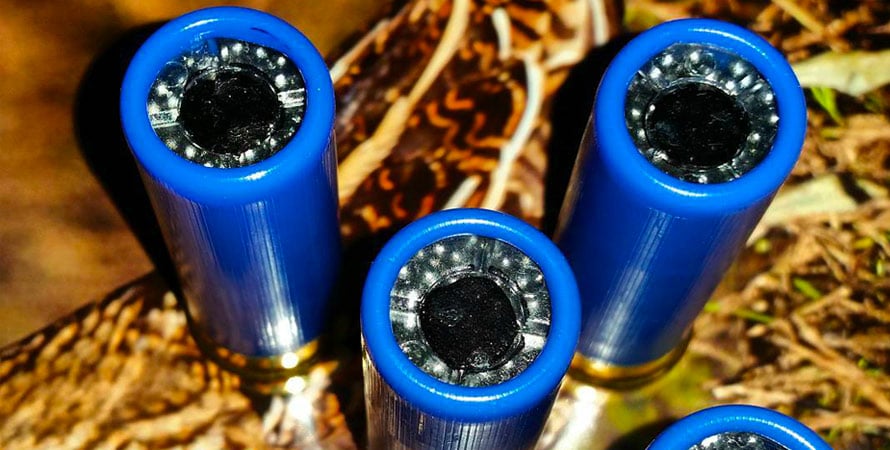
The cutaway section of a 16 gauge shell, for a 17.0 mm bore, is 227 mm2, about 85% that of a 12 gauge.
This percentage, used in a simple proportional calculation, gives us a good idea of the correct powder/lead load, based on known figures for a 12 gauge.
The Magnum 76 mm 16 gauge chamber has been around for just a few years since the Permanent International Commission for firearms testing introduced it, as for 28 gauge, probably in consideration of a more widespread use of steel shot, with a different kinetic energy limit for standard and Magnum shells, a longer chamber being an advantage for the latter.
As 16 gauges were widely used in the past, but there’s been very little request for these shells over the last 50 years with a limited production of modern guns, it’s easy to find shotguns with “short” chambers, in other words for 65 mm shells (English 2 ½”), in which you can only use 16 / 65 or 16 / 67 cases, but should never use 2 ¾” (70 mm) cases.
As far as we know, no gunmaker in Italy or anywhere else in the world has ever made “Magnum” 16 gauge guns, until now.
A comparison with the cross-sectional area of a 12 gauge and the main types of shells available today
At the muzzle a 16 gauge, as mentioned above, on average will have a bore size of around 17.00 mm, a value right in the middle of the range for a 16 gauge. So modified cylinder (****) chokes correspond to 2.5 tenths, Modified (***) to 5 tenths, Improved (**) to about 6.5 tenths and finally max. “full” (*) chokes to 9 tenths.
As mentioned above, a 16 gauge has 85% of the cross-sectional area of a 12 gauge, and this percentage, with a little rounding off, gives us the following load levels corresponding proportionally to a 12 and 16 gauge:

Various ammo manufacturers until now have made 16 gauge shells in just a few types with one single load, but growing interest among hunters has been a breath of new life, and ammo manufacturers are introducing shells with a variety of loads.
Commercially available ammo usually has a star crimp, sometimes also on 65 mm cases, with only a few shells still made with a roll crimp. The most common loads are 27 /28 / 29 / 31 grams.
Nowadays most wads are plastic, although you can still find some rare shells with traditional wads and an plastic couvette or rigid RVL plastic disc, which acts as a base for the powder.
The B&P couvette is used with traditional wads made of fluffy inert material. The Diana or Triblock wads for example are made of vegetable felt and fibre guaranteeing a perfect gas-tight seal.
For the 16 gauge, after decades in which the Original Brenneke, Stendebach and the occasional “Maremmana” slug ruled unchallenged, today there a new types of modern shells like the Gualandi Slug and the B&P Thrill Shock designed specifically for hunting hoofed game. These shells are designed to be used with chokes, they are very precise and offer high penetrating power.

This goes for the 16 gauge too, producing stable slug velocities of around 430 / 450 m/s.
The best buckshot to use in a 16 gauge is a No. 10/0 (8.00 mm weighing around 3.00 grams) which gives you three perfect layers of three buckshot pellets each layer.
Hunting with a 16 gauge
The truth is that the 16 gauge was once a much loved calibre and an effective and very popular shell, used for almost all kinds of hunting for all types of game both sedentary and migratory; shells like the Brenneke and Stendebach slug or 10/0 (8.00 mm) buckshot were used to hunt boar, and a 16 was used for smaller game too.
You can still find the shortest 16 gauge shells as they’re still being made for old shotguns with 65 mm chambers, and these shells are perfect with medium loads in a roll crimp case or with denser powders in a star crimp case.
The short 16 / 65 shell is versatile and universal. It can be used for all loads in the middle of the 16 gauge range up to medium-heavy shot loads, ideal for roll crimped cases, while the 67 mm case can still be used in guns with a short chamber, and works well with a star crimp.
70 cases with medium-heavy loads and voluminous powders are the most logical and rational choice in moderns guns that have chambers of that size. By choosing either a star or roll crimp you can use medium or heavy loads in this gauge, up to 35 / 36 gram Baby Magnum with special wads in some original loads up to the so-called “Magnum 70” with a 38 / 40 gram load.


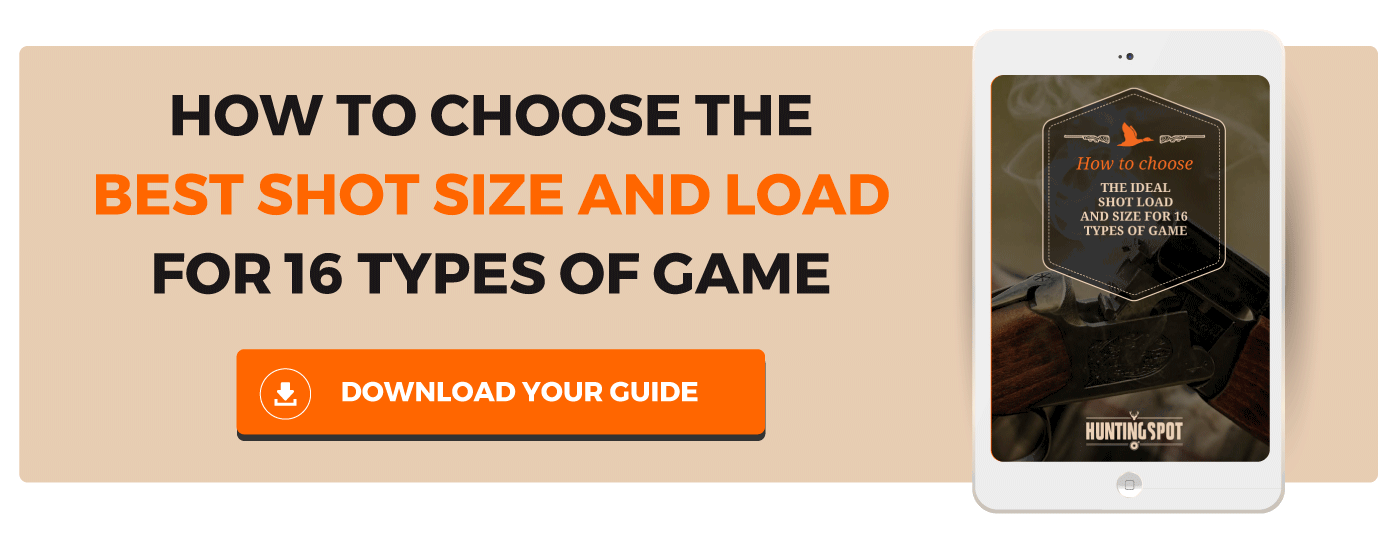

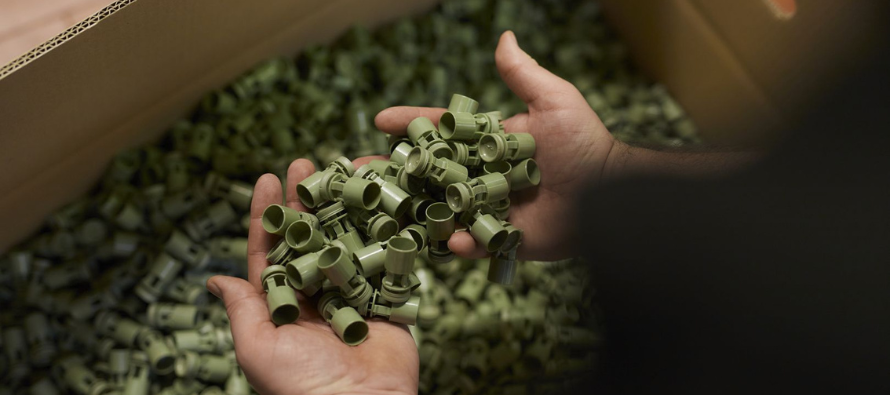

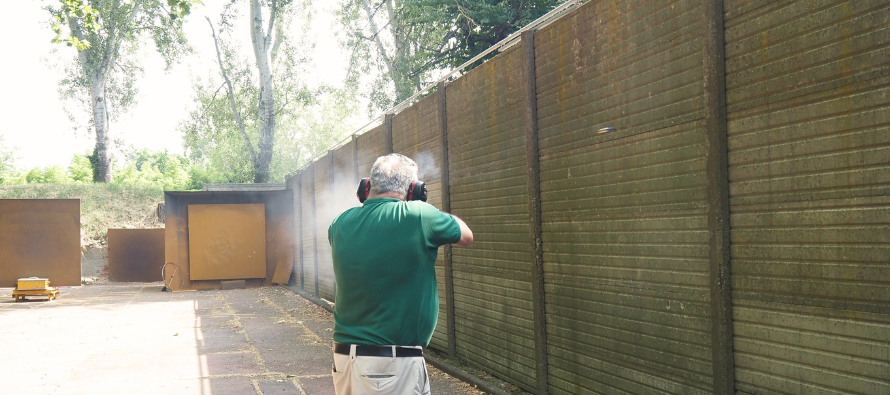
Comment this post